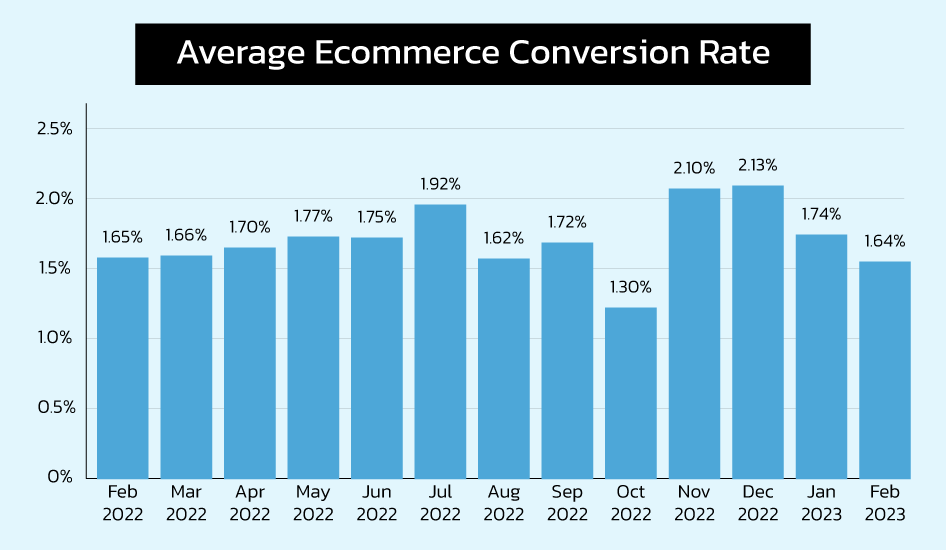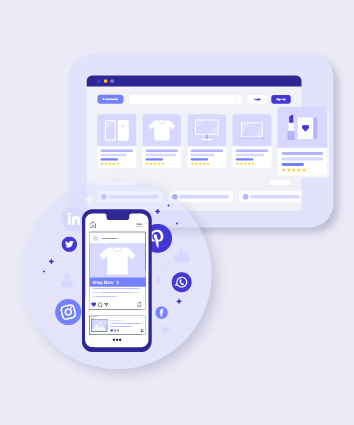What is a Key Performance Indicator (KPI)? Beginner’s Guide!

It might be difficult to settle on the KPIs most relevant to your eCommerce business. Your unique tactics and objectives should guide your decision. Since it is impossible to keep tabs on everything, what are the key performance indicators e commerce? It is essential to identify and prioritize the data that is worth tracking and reporting on a frequent basis.
While there is no silver bullet, most online stores may benefit from using a select set of top metrics and eCommerce KPI standards such as customer acquisition cost, customer lifetime value, customer satisfaction, etc.
What are eCommerce KPIs?
Key performance indicators (KPIs) in eCommerce assist you in analyzing your business’s progress and identifying areas for improvement. Online retailers may compare their results to their rivals using industry-specific and competitive KPI standards.
In 2023, businesses are becoming more about data! Marketers will be faced with a deluge of information about the user’s location, browser, keywords, goals, conversion and bounce rates, pages per session, time spent on site, average order value, and much more may be gleaned from various metrics.
While tools like Google Analytics and Amazon Seller Central may help your company collect relevant data for your Ecommerce Store, it will be difficult to turn that information into actionable goals without meaningful eCommerce KPIs.
Exactly what is the difference between KPIs and metrics?
Key performance indicators are the ecommerce metrics that really count.
Numerous metrics may be found. Clicks. Share of business generated. Earnings from memberships. However, as Jonathan Taylor of Klipfolio puts it, “not all metrics are KPIs.” Key performance indicators are the essential measures you may use to assess progress toward your organization’s most critical objectives.
Simply said, metrics are used to track improvement over time.
Key performance indicators (KPIs) are a useful tool for keeping tabs on your company’s most crucial metrics and making strategic decisions.
In addition, Key Performance Indicators are sometimes constructed from a combination of more than one parameter.
Here is a metric for website traffic which is the Views/Sales Ratio of a Website, and another one is the customer retention rate.
One common statistic used to examine the connection between these two is the “conversion rate.”
The conversion rate is calculated by dividing the total number of purchases by the total number of site visits and then multiplying that figure by 100.
Conversion Rate = 10% = (100 Sales / 1,000 Visitors) x 100
Even if they aren’t currently being used as key performance indicators, many metrics are nonetheless valuable to monitor. Those figures might be crucial at a later date.
Why are KPIs Important?
KPIs provide additional insights into both your company and its clientele, allowing you to make choices that are both well-informed and strategically sound.
KPIs are crucial in the same way that developing a plan and creating goals is vital. It is impossible to measure success over time without key performance indicators (KPIs). You’d be relying on your gut feeling, your own preference or belief, or any other baseless hypothesis while making judgments.
KPIs for eCommerce provide you with the ability to make educated choices about income, marketing strategies, customer experience, and other significant facets of the business. They assist in determining which techniques are successful and which are not.
However, key performance indicators are not essential on their own. The true value is in the insights that can be put into action, and you can get them by evaluating the data.
You will be able to more precisely create methods to generate more online sales, in addition to understanding where potential issues may exist in your company, once you have this information.
Additionally, the data that is associated with KPIs may be shared with the greater team. This presents an opportunity to both educate your staff and bring them together to work on essential problem-solving.
You may also use eCommerce key performance indicators to determine where you should concentrate your efforts and get insights into how to fix difficulties. In the end, they will assist you in determining which adjustments you need to make in order to expand your consumer base and bring in a greater amount of money.
In the absence of these sorts of eCommerce performance measures, the decision-making process would need you to depend on either your gut feeling or your own personal judgments.
Using data as the basis for your decisions is a more effective strategy for achieving success in the company. It is more likely to win the approval of senior stakeholders, stockholders, and lenders as well.
Most Important Key Performance Indicators to Focus on for Business Growth

Now that you have a solid idea of what key performance indicators (KPIs) are and how you can utilize them to make continuous improvements to your company, let’s go into important ecommerce metrics.
If you feel too confused about any key performance indicator, you can always contact our digital marketing agency.
These key performance indicators (KPIs) have the potential to provide incredibly significant insights into the strategic goals of your company. They will assist you in recognizing the possible pitfalls that you should stay away from, as well as the ideal possibilities that you should take advantage of.
Conversion rate
Converting consumers into paying clients should be your primary focus at the end of the day. However, your conversion rate will tell you much more than just whether or not you are successful; it will also help you understand whether or not you are directing visitors to the appropriate pages and items.
How successful are your landing pages and the calls to action that you include on them? Do they only have a lovely appearance, or do they also perform their function of enticing more customers to purchase your products?
The reality will become clear after you look at your conversion rate.
The proportion of visitors to your ecommerce website that actually does an activity while they are there is referred to as the conversion rate. This action might be anything, like subscribing to an email newsletter or completing a purchase, for example.
Note: As your business expands, monitoring the items that customers add to their shopping carts may provide extra layers of context to the data you collect.
The conversion rate may be calculated by dividing the number of customers who completed the desired activity by the total number of site visitors who were presented with the option to do so.
It is essential to keep in mind that the typical conversion rate might vary quite a bit from business to industry. The percentage of customers who make a purchase on the website of a company that sells expensive watches is not likely to be comparable to the percentage of customers who make a purchase on the website of a company that sells inexpensive apparel.
Therefore, make sure that you take a critical approach while analyzing e-commerce benchmarks.
If you’ve noticed that the conversion rate on your website has been slowly going down, you may want to investigate the possibility of enrolling in a conversion optimisation agency.
Your conversion rate is a measure of how well your website persuades users to take the desired course of action.
For instance, if your landing page is getting a lot of traffic but has a very poor conversion rate, you will need to test different methods to enhance the page so that it can inspire more people to convert.
What is an acceptable rate of conversion?
The typical rate of conversion for consumers shopping online all across the globe is 2%.

(No. of Conversions ÷ No. of Leads) x 100 = Conversion Rate
Customer Retention rate
The key performance indicator, “customer retention rate“, refers to the proportion of customers who continue to be patrons of a business after an initial period of engagement. The higher this score is, the better job you are doing of catering to the needs of your clients.
It is essential to keep in mind, while doing this calculation, to deduct the number of new consumers from the total number of customers. However, the emphasis of this measure is on the degree to which you are successful in maintaining relationships with your present clientele.
Because it is so much more cost-effective to keep pleased consumers than it is to acquire new ones, e-commerce enterprises rely heavily on the patronage of returning customers. The CRR ecommerce measure monitors how well you are able to retain clients once you have gained their business.
To calculate the ecommerce customer retention rate (CRR), take the number of customers at the end of a given period and deduct the total number of new customers obtained during that time. First, multiply the final number by 100, then divide the answer by the total number of consumers you had at the beginning of the time period.
The importance of not underestimating the significance of conversion rates cannot be overstated because of the clear correlation it has with customer happiness and loyalty.
Average order value
How much money a consumer normally spends on a single order is represented by the AOV metric of an ecommerce site.
You need to figure out how to get more out of the people that visit your site. You may not see a lot of visitors in the beginning.
In order to optimize income, you will likely prioritize providing comprehensive solutions for your clients via cross-selling, upselling, and bundling. You can’t tell whether AOV is successful until you monitor it.
Average Order Value (AOV) is determined by dividing total revenue by the total number of orders placed within a certain time period. The average order value (AOV) would be $500 if today’s sales of $100,000 were generated by 200 separate orders. It also shows how much revenue you will generate.
Let’s pretend, for the sake of argument, that you own an online gift shop. The average price of most things will be less than $50. However, you may enhance your average order value by boosting sales of more expensive things like gift cards, customized t-shirts, etc.
You can gauge the success of your upselling efforts by monitoring the AOV over time.
Customer acquisition cost
Customer Acquisition The whole amount of money that is normally spent in order to acquire a new client is referred to as the cost.
This cost performance index has been referred to as the “startup killer” by some. This is due to the fact that many new businesses begin with substantial sales and marketing expenditure in order to acquire new leads; however, the number of prospects that really convert is quite low, which results in a very high CAC.
To get this ecommerce metric for online businesses, divide the total sales and marketing expenses you incurred over a certain time period by the number of new clients you gained during that time period. Which expenses associated with sales and marketing, do you take into consideration? Every one of them.
If you start to see that this statistic is steadily increasing over time, this should serve as a warning indicator that either something is wrong with your product or with the customer experience you are providing.
Expenses like administrative fees and sales and marketing spend should be included in your calculations. If your CAC is $50, but your AOV is just $10, for instance, you’re losing money quickly.
On the other hand, you’re making money if your AOV is $100. This key performance indicator is especially valuable for low-margin product retailers since it may be used to determine appropriate pricing.
Customer Acquisition Costs (CAC) are an excellent KPI for ecommerce store owners to aim for since they tend to go down as a company becomes more known. However, the cost of client acquisition is insufficient for sound decision-making in isolation. To further understand your performance, compare your CAC to other measures, such as your AVO.
Customer acquisition cost (CAC) is determined by dividing all marketing expenditures by the total number of new customers gained during a certain time period.
CPA = Costs of conversion acquisition ÷ number of conversions
Customer lifetime value (CLV).
Customer lifetime value, also known as CLV, CLTV, or LTV, is the average amount of net profit that each customer is anticipated to provide to a company over the course of their whole association with the company. This number might vary depending on the industry.
The chore of calculating how much a client is worth to your company might be intimidating, but it is crucial.
You will have a better understanding of your return on investment (ROI), and it will be of tremendous assistance to you when formulating a plan for achieving future objectives.
The better your LTV, the less money you will need to invest in the recruitment of new clients. To keep from pouring unnecessarily large sums of money into customer acquisition as your e-commerce company expands, you should work to cultivate long-term connections with your clientele.
When it comes to marketing, one of the worst errors you can make is looking at your client base through the exclusive prism of a single transaction. A holistic perspective is used for calculating CLV.
It examines clients from the perspective of how much income they will generate for a firm over the length of an entire relationship with that customer.
Multiplying the average order value by the average buy frequency rate and the average client longevity will get you the CLV.
This key performance indicator also shows you how successful your company is able to keep existing consumers.
Shopping cart abandonment rate
Because so many customers do not complete this stage of the consumer experience, tracking the shopping cart abandonment rate (SCAR) is a vital component of running an eCommerce business.
Many ecommerce businesses suffer losses regardless of whether their primary focus is on increasing revenue, enhancing the shopping experience for customers, or building their brand.
This eCommerce measure is often a sign of how straightforward and reliable your checkout procedure is. Redesigning this section of your website might be necessary if the percentage of shoppers who do not complete their purchases is large.
It is possible that customers are dissatisfied with your shipping rates, payment methods, or the process of checking out if a significant number of consumers add an item to their cart but do not complete their purchase.
To increase the likelihood of customers making a purchase and gain customer satisfaction, you may need to broaden the range of payment methods available to them or work with a reliable payment processing company like PayPal or Stripe.
The good news is that decreasing this rate is one of the simplest and most cost-effective strategies to enhance income as well as conversions and satisfaction levels among customers. It should also lower the expenses associated with acquiring new customers. Therefore, you should aim high for this key performance indicator.
To get the proportion of customers that leave their shopping carts, just multiply the number of purchases made on your website by the number of carts that were generated and then divide that figure by 100.
Cost of Goods Sold
The cost of goods sold (COGS) is a measure that is essential for online merchants of all kinds. It is an evaluation of the direct expenses that are linked with the production of the items that you sell, and it is often referred to as the “cost of sales.”
The cost of goods sold (COGS) is a retail performance statistic that e-commerce vendors may use to better comprehend their own manufacturing and production expenses. It does not take into consideration the overhead costs or the marketing expenditures. It is important to keep in mind that the computation of COGS will provide different results based on the accounting standards that are followed.
Cost of Goods Sold (COGS) = Beginning Inventory + Sales – Ending Inventory
Product Performance KPIs
You will have a better understanding of the success of each product in your eCommerce store if you divide your KPIs down to the product level. ECommerce businesses will benefit enormously from the aforementioned activity. You should also think about ecommerce metrics that are particular to each category.
If you sell your brand via a third-party retailer such as Amazon or Tesco, it is vital that you take into consideration how well your product performs on the websites of third-party retailers.
It is necessary for you to think about which of your items are selling the best on the websites of third-party retailers. What steps can you take to boost the total number of items sold? Determine the kind of things being purchased as well as the locations from where they are being obtained.
You are able to take control of your brand on retailer websites since you are able to evaluate the performance of each individual product that is sold via third-party merchants. Investigate the matter thoroughly and gather information on particular product conversions for each of the brands that the merchant carries.
It might be challenging to determine which retailer is producing better results or converting visitors at a greater rate if you are attempting to utilise various attribution systems at the same time. You are able to get all of this information, as well as other relevant data, in the form of a report that is simple to analyse and understand.
Net Profit
The net profit of an eCommerce business is a performance statistic that is sometimes disregarded, despite the fact that it is an obvious vital indicator of the overall health of an eCommerce store.
Making a profit is a significant accomplishment for new businesses. Understanding the specifics of how much money is coming in can inform you how much you have available for investments in areas such as marketing, improving the customer experience, and other growth-oriented endeavours.
Keeping an eye on an organization’s ability to sustain a high net profit is another important key eCommerce performance indicator for major businesses. You can be certain that it is something that is at the forefront of the minds of those working in marketing and sales, even if it does not have the same weight in terms of the company’s capacity to continue operating as a going concern.
It is also essential to be aware of the magnitude of the influence that major shifts in shipping, special offers, discount percentages, low-margin product lines, and advertising bids have on this statistic.
All of these techniques have the potential to increase conversions, but they also have the potential to adversely influence your bottom line. If you choose to use any of these strategies, you should closely monitor both your net profit and your profit margin.
Net profit = Total revenue – Total Expenses
Return on Ad Spend (ROAS)
For online stores, one of the most important metrics for digital marketers to track is the return on ad spend (ROAS).
It’s a key performance indicator that’s comparable to cost per acquisition (discussed above) but with a few key differences.
Cost per acquisition measures how much it costs to acquire a single consumer, whereas the return on ad spend measures how profitable an ad campaign is. These two eCommerce metrics are intertwined since ROAS influences CPA.
Despite this, there are enough distinguishing features between the two that they need independent analysis. CAC, for instance, disregards the whole dollar amount of an order. It might be a red flag that client acquisition is expensive.
However, things start looking up if the buyer makes a sizable purchase on your site.
ROAS would account for this in the aforementioned case (presuming the traffic was paid for). Return on ad spend (ROAS) measures the profitability of an advertising campaign by contrasting the cost of acquisition with the revenue generated.
This eCommerce KPI is more volatile than CAC due to the inclusion of two variables that change greatly, yet, it should still be taken into account.
Net Promoter Score
So far, most of the eCommerce indicators we’ve discussed focus on the money side of things, such as sales and profits. An alternative indicator for retail success, the net promoter score evaluates how satisfied customers are with a company based on their recommendations.
Measuring the quality of the customer experience is challenging for online retailers since it is intangible. This eCommerce KPI is not one that can be easily analysed using your own systems. In order to calculate your Net Promoter Score, you must poll your clientele.
Finding out what percentage of your customers are promoters, passives, and detractors is necessary for determining your NPS.
To do so, you need to provide a question like, “on a scale from 1 to 10, how likely are you to recommend this company to a friend?” All responses with a score of 7 or 8 are deemed neutral, while those with a score of 9 or 10 are termed promoters.
Then, use the following formula to determine your NPS:
NPS = % of Promoters – % of Detractors
How to Boost Critical Ecommerce KPIs with NFlow Technologies
You may use the information on your e-commerce KPIs to start better serving your customers.
Investing in a conversion rate optimisation plan may be the best option if you want to find concrete strategies to improve your key performance indicators and total conversion rate.
Google Analytics is the industry standard for monitoring the success of e-commerce websites, despite the constant stream of new and improved alternatives in today’s rapidly evolving technological landscape.
In addition, Google Tag Manager lets you track certain key performance indicators (KPIs) for your online store, which is quite helpful for doing market research. Without access to your online shop or knowledge of HTML code, your non-technical personnel may easily set up data collecting.
How to Benchmark Your E-Commerce KPIs in 6 Easy Steps:
- Set some ambitious company targets.
- Find out how well your website is doing right now.
- Figure out what it is you need to track.
- Find the best key performance indicators (KPIs) to monitor progress.
- Plan out your benchmarking strategy.
- Carry out, monitor, adjust, and repeat!
To have fast business growth, you must hire or collaborate with a digital marketing firm that can help you in data-driven decision-making. Therefore, we put a premium on research and user testing to figure out how to boost your most crucial KPIs.







